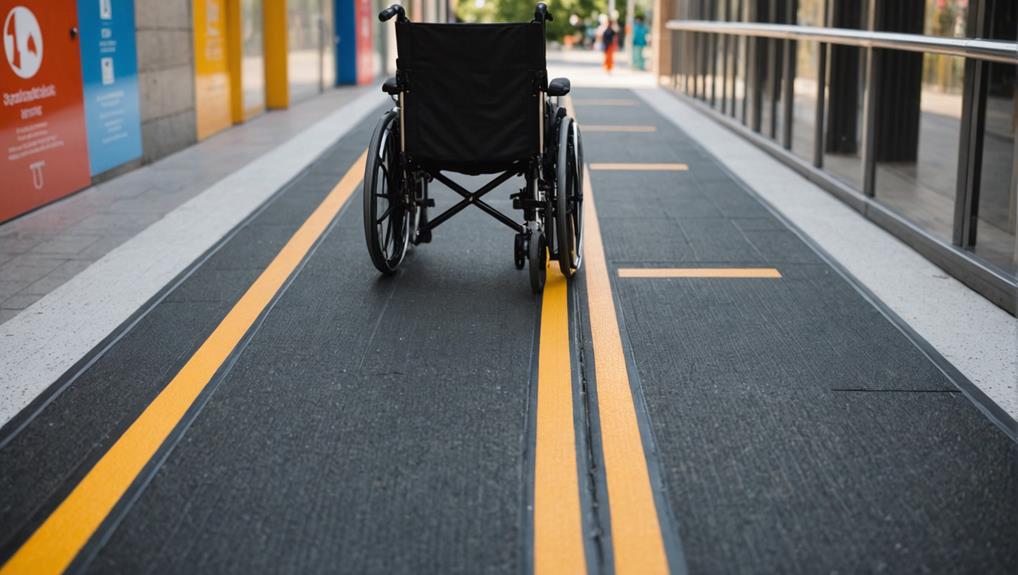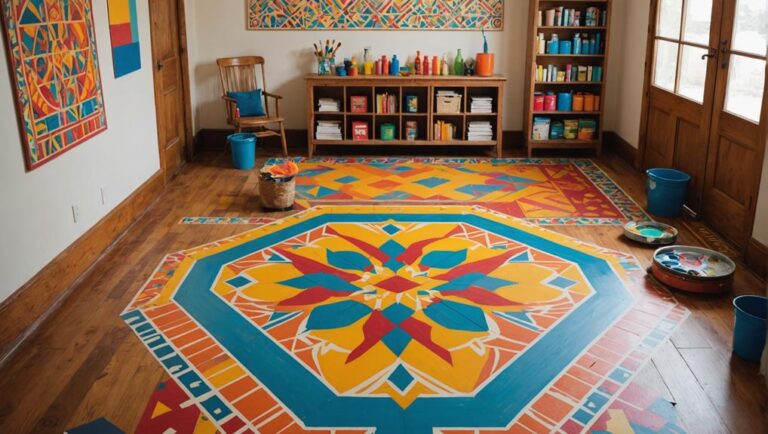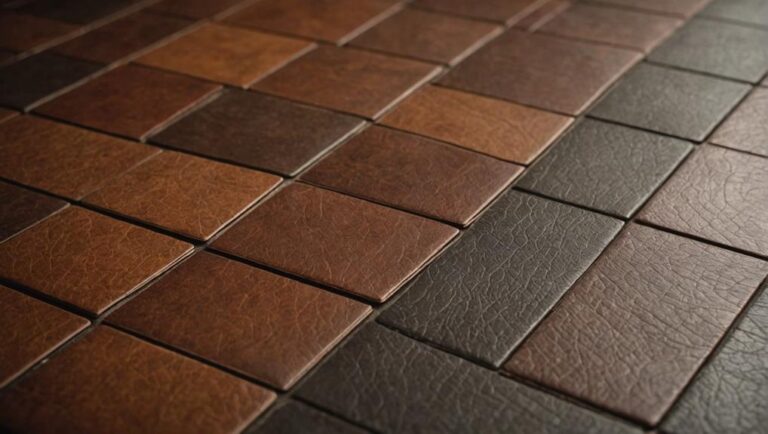To prevent slipping in wheelchair-accessible spaces, prioritize safety by choosing non-slip surface materials like rubber or textured tiles. Regular maintenance is key—inspect for wear and tear, clean surfaces, and address any issues promptly. Effective drainage solutions help direct water away, reducing slip risks, while anti-slip features like mats or coatings can enhance grip. Clear signage can guide users safely through the area. Educate both staff and users about potential hazards, fostering a safety-conscious culture. By focusing on these aspects, you can create a safer environment that supports everyone's mobility needs. Exploring further will uncover even more helpful strategies.
Importance of Safety in Accessible Spaces
When it comes to wheelchair-accessible spaces, ensuring safety isn't just a priority—it's a requirement. Every aspect of these environments should be designed with the user in mind. When you think about inclusive design, it's crucial to recognize that safety directly impacts user experience. You want spaces that not only accommodate wheelchair users but also foster confidence and independence.
Slipping can pose significant risks for individuals who rely on wheelchairs. It's important to evaluate how surfaces and layouts can prevent accidents. By focusing on safety features like non-slip surfaces, ramps with proper gradients, and clear pathways, you create an environment that's both functional and safe. Each element plays a critical role in enhancing the overall user experience, making it easier for individuals to navigate without fear.
Furthermore, you should acknowledge that the design of accessible spaces doesn't just affect wheelchair users; it impacts everyone. When safety is prioritized, it encourages a culture of inclusivity, where all individuals can move freely and confidently. By employing inclusive design principles, you contribute to a community that respects and values the needs of everyone, regardless of their mobility challenges.
Choosing the Right Surface Materials
When it comes to wheelchair-accessible spaces, selecting the right surface materials is essential for safety. You'll want to take into account non-slip flooring options, as well as texture and grip to prevent slips. Additionally, choosing weather-resistant materials can help maintain safety in varying conditions.
Non-Slip Flooring Options
Choosing the right surface materials for wheelchair-accessible spaces is essential, especially since improper flooring can lead to dangerous slips and falls. When selecting non-slip flooring, you'll want to evaluate options that provide both safety and durability. Two popular choices are rubber flooring and vinyl surfaces, each with its own benefits.
Here's a quick comparison to help you decide:
| Flooring Type | Benefits | Considerations |
|---|---|---|
| Rubber Flooring | Excellent grip, shock-absorbent, durable | Can be more expensive, requires maintenance |
| Vinyl Surfaces | Cost-effective, easy to clean, available in many designs | May not provide as much grip as rubber |
| Textured Tiles | Increased traction, customizable patterns | Can be difficult to install |
| Carpet Tiles | Soft underfoot, good insulation | Can trap dirt and moisture |
| Laminate Flooring | Affordable, visually appealing | May be slippery when wet |
Texture and Grip Considerations
Selecting the right flooring is just the beginning; understanding texture and grip is equally important to guarantee safety in wheelchair-accessible spaces. When choosing surface materials, consider how their texture can affect wheelchair grip. Smooth surfaces, while aesthetically pleasing, can be hazardous, especially when wet. Textured surfaces, on the other hand, can provide the necessary friction to prevent slipping.
Look for materials that have a coefficient of friction rating suitable for wheelchair use. This rating indicates how much grip the surface offers. Rubberized flooring, for example, tends to provide excellent traction, making it a great choice for high-traffic areas.
It's also essential to assess the surface's durability. Over time, wear and tear can diminish the grip of certain materials. Regular maintenance, including cleaning and inspecting for damage, can help guarantee the surface retains its effectiveness.
Lastly, consider the environment in which the flooring will be used. Indoor and outdoor spaces may require different surface textures to accommodate various conditions. By prioritizing texture and grip, you'll create a safer, more accessible environment for everyone.
Weather-Resistant Materials
Weather-resistant materials play an indispensable role in guaranteeing the safety and accessibility of wheelchair-friendly spaces, especially in outdoor environments. When designing or renovating these areas, it's essential to choose the right surface materials that can withstand various weather conditions. Look for weather-resistant coatings that protect surfaces from moisture, preventing the growth of mold or algae, which can lead to slipping hazards.
Additionally, consider incorporating slip-resistant treatments into your design. These treatments enhance traction on surfaces, even when wet, which is critical for maintaining safety. Whether you're using concrete, asphalt, or pavers, applying a slip-resistant finish can considerably reduce the risk of accidents.
Always prioritize materials that can endure harsh weather changes, as this not only extends the lifespan of the surfaces but also guarantees consistent safety for wheelchair users. Regular maintenance is also indispensable; inspect surfaces periodically to verify that coatings and treatments remain effective. By selecting the right weather-resistant materials and keeping up with maintenance, you can create a secure, accessible environment that supports everyone's mobility needs.
Proper Drainage Solutions
When it comes to wheelchair-accessible spaces, proper drainage solutions are essential to prevent slips and falls. You need to guarantee effective surface grading and maintain your drainage systems regularly to keep water from pooling. By addressing these factors, you create a safer environment for everyone.
Effective Surface Grading
Effective surface grading is essential for guaranteeing wheelchair-accessible spaces remain safe and functional. When it comes to preventing slips, the correct surface slope is critical. You want to make certain that the grading directs water away from high-traffic areas, helping to keep surfaces dry and secure.
Using effective grading techniques can minimize the risk of water pooling, which can lead to slippery conditions. Ideally, a slope of 1-2% is recommended, allowing for proper drainage without being too steep for wheelchair users. Maintaining this slope is important, as even slight changes in surface grading can create hazards.
Consider using materials with good traction and incorporating textured surfaces in areas where water may accumulate. Regularly assess the condition of pathways and surfaces to confirm they're not deteriorating, which could alter the intended grading.
Drainage System Maintenance
Proper surface grading is only part of the equation for maintaining wheelchair-accessible spaces. A well-designed drainage system is essential to prevent slipping hazards. You need to guarantee that your drainage design effectively manages surface runoff, directing water away from walkways and ramps.
Here are some key maintenance tips:
- Regularly inspect and clean gutters and drains to prevent clogs.
- Confirm that drainage slopes are adequate to facilitate water flow.
- Repair any cracks or damage in the surface that could trap water.
By prioritizing drainage system maintenance, you can greatly reduce the risk of slips and falls. Water accumulation not only creates a safety hazard but can also lead to long-term damage to surfaces, making maintenance more costly.
Always remember that proper drainage isn't just about aesthetics; it's about creating a safe environment for everyone. Keeping surfaces clear of water will provide peace of mind for those using wheelchair-accessible spaces. Regular checks and timely interventions will help maintain safety and accessibility, guaranteeing that these spaces work as intended for all users.
Regular Maintenance Practices
Regular maintenance practices are vital for guaranteeing wheelchair-accessible spaces remain safe and functional. By implementing preventive maintenance measures, you can greatly reduce the risk of slips and falls, making these spaces more welcoming for everyone. Regularly scheduled routine inspections are important in identifying potential hazards before they become serious problems.
Start by checking the condition of surfaces regularly. Look for cracks, uneven areas, or surfaces that have become slick due to wear or weather conditions. If you notice anything unusual, address it immediately to prevent accidents. Pay close attention to high-traffic areas that may experience more wear and tear.
You should also assess the drainage systems to guarantee water is flowing away from accessible paths. Standing water can create slippery conditions, so it's important to keep these areas clear and well-maintained.
Additionally, make it a habit to inspect handrails, ramps, and thresholds. Make sure they're sturdy and free of debris that could cause someone to trip. If you find any issues, take the time to repair or replace them as needed.
Lastly, keep communication open with anyone who uses these spaces. Their feedback can help you identify problems you might have missed and can be invaluable in creating a safer environment. By committing to regular maintenance practices, you're not just guaranteeing compliance; you're fostering a space that prioritizes safety and accessibility for everyone.
Installing Anti-Slip Features
When it comes to enhancing safety in wheelchair-accessible spaces, installing anti-slip features can make a significant difference. These features not only reduce the risk of slips and falls but also promote confidence among users. Here are some effective options to take into account:
- Anti slip coatings: These coatings can be applied to various surfaces, including ramps, walkways, and floors. They create a textured surface that increases friction, making it harder to slip.
- Grip enhancing treatments: These treatments can be utilized on existing surfaces to boost traction. They often work by altering the surface properties, enhancing grip without compromising aesthetics.
- Non-slip mats or strips: Adding these mats or strips in high-risk areas, such as entrances and around ramps, can provide an immediate solution for improving safety.
Choosing the right anti-slip feature is vital. Anti slip coatings are perfect for larger areas, while grip enhancing treatments can be great for specific spots that need extra attention. Non-slip mats or strips serve as a quick fix and can be easily replaced or relocated as necessary.
Before proceeding, it is important to assess your space and choose the solution that best meets your needs. Prioritize materials that are durable and suitable for outdoor use if applicable. By implementing these anti-slip features, you'll be taking a proactive step toward creating a safer environment for everyone who relies on wheelchair-accessible spaces.
Utilizing Clear Signage
Effective communication in wheelchair-accessible spaces can make all the difference, and utilizing clear signage is a key part of that. When you're maneuvering these areas, you want to feel safe and aware of your surroundings. Clear signage not only helps you identify potential hazards but also guides you towards safe routes.
One of the most critical factors in effective signage is visibility. Signs should be large enough to read from a distance, guaranteeing that you can easily spot them as you approach. Make sure that the text and symbols used are easily recognizable, so you won't have to squint or guess what they mean.
Color contrast plays an essential role in enhancing signage visibility. High contrast between the text and background helps to make certain that signs stand out, especially for individuals with visual impairments. For example, using dark lettering on a light background—or vice versa—can make a significant difference in how quickly you can process the information.
Additionally, consider the placement of your signage. Signs should be located in areas where they're easily seen, such as at the entrance of a space or along pathways. By confirming that your signage is both visible and appropriately contrasted, you can help reduce the risk of slips and falls in wheelchair-accessible spaces. Ultimately, clear signage can empower you to maneuver confidently and safely, making your experience more pleasant and secure.
Educating Staff and Users
A well-informed staff and user base is essential for maintaining safety in wheelchair-accessible spaces. When everyone understands the risks and preventive measures, the likelihood of slips and falls decreases considerably. Here are a few key areas to focus on:
- Proper staff training: Make certain that staff members are well-trained in identifying hazards and responding effectively.
- User awareness: Educate users about their surroundings and encourage them to report any unsafe conditions immediately.
- Regular safety audits: Conduct regular checks to identify and mitigate potential slipping hazards.
To achieve this, implementing a robust staff training program is critical. Training should cover the unique challenges wheelchair users face, as well as the best practices for maintaining a safe environment. Equip your staff with the knowledge to recognize and address issues such as wet floors, uneven surfaces, or improper drainage.
User awareness also plays an important role in safety. Encourage users to stay vigilant and to communicate any concerns they may have about accessibility features or conditions. Providing informational materials, such as pamphlets or workshops, can empower users and make them active participants in their own safety.
Ultimately, fostering a culture of safety among both staff and users creates a more secure environment for everyone. By prioritizing education and awareness, you can considerably reduce the risk of slips and falls in wheelchair-accessible spaces.
Community Involvement and Feedback
Community involvement and feedback are vital for creating safer wheelchair-accessible spaces. When you actively engage with your community, you can better understand the specific challenges faced by wheelchair users. This user involvement is essential in identifying potential hazards that may not be immediately obvious to those who don't navigate these spaces daily.
Consider hosting community forums or workshops where individuals can share their experiences and suggestions. Encouraging open dialogue allows users to express their concerns and ideas for improvement. Their insights can lead to effective solutions, such as the installation of non-slip flooring or better drainage systems to prevent water accumulation that causes slipping.
Moreover, utilizing surveys can be an excellent way to gather community feedback. By asking targeted questions, you can glean valuable information on the specific areas where accessibility is lacking. This data can guide decision-making processes and prioritize the most urgent safety upgrades.
It's also important to keep the lines of communication open after changes are made. Regular check-ins with users can help you assess the effectiveness of implemented solutions and identify any new issues that may arise.
Ultimately, fostering a collaborative environment where all voices are heard not only helps create safer wheelchair-accessible spaces but also strengthens community bonds. By working together, you can guarantee that everyone can navigate public areas with confidence and safety.
Frequently Asked Questions
What Are the Best Shoes for Wheelchair Users to Prevent Slipping?
When selecting shoes to prevent slipping, focus on shoe materials and tread patterns. Look for shoes made from rubber or synthetic materials, as they provide better grip. Tread patterns with deep grooves enhance traction on various surfaces. Opt for slip-resistant soles designed specifically for safety. These features not only boost your confidence while moving but also help guarantee your safety in different environments. Remember, comfort is just as important as functionality in your footwear choice.
How Can Weather Conditions Affect Wheelchair Accessibility?
Weather conditions can greatly impact wheelchair accessibility. Rain, snow, or ice can create slippery surfaces, making it hard to navigate safely. You should consider the surface materials used in accessible spaces, as some may not provide adequate grip in wet or icy conditions. It's crucial to stay informed about weather effects and choose locations with appropriate materials to guarantee your safety and mobility, regardless of the weather. Always prioritize your safety when planning your outings.
Are There Wheelchair-Specific Anti-Slip Products Available?
Yes, there are wheelchair-specific anti-slip products available that can enhance safety. You might consider using anti-slip mats specifically designed for wheelchair ramps. These mats provide better traction, reducing the risk of slipping, especially in wet or icy conditions. When selecting products, look for those with high durability and weather resistance to guarantee they last. Prioritizing safety in accessible spaces is essential, and these solutions can help provide peace of mind for users.
What Role Do Wheel Locks Play in Preventing Slipping?
Did you know that nearly 30% of wheelchair users have reported accidents due to slipping? Wheel locks play a vital role in preventing these incidents. By engaging the wheel lock, you enhance your safety mechanisms, ensuring your chair remains stationary on uneven surfaces. This stability reduces the risk of slipping, providing you with confidence and security. Remember, effective use of wheel locks is key to maintaining a safe environment for yourself and others.
How Can Users Report Slippery Areas in Public Spaces?
If you encounter slippery areas in public spaces, it's important to report them promptly. You can share your user feedback with local authorities or through community platforms. This helps raise awareness about safety concerns and encourages action. Don't hesitate to document the location and conditions, as this information is crucial. By speaking up, you contribute to a safer environment for everyone, ensuring that others are informed and protected from potential slips.




